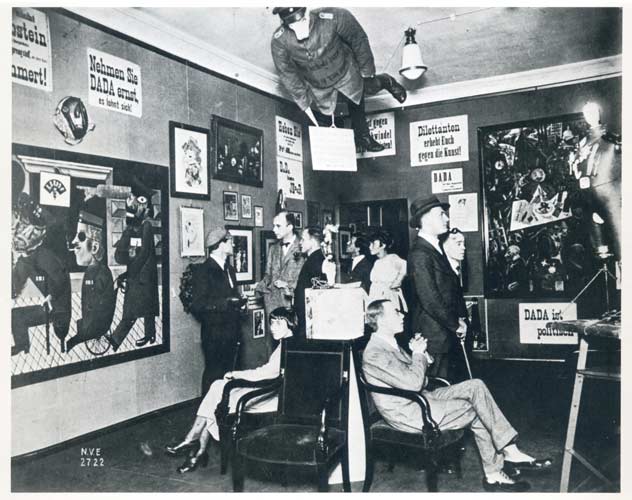
“To think that Dada will ever die is an absurd. Dada will always emerge anew one way of another, always when too much stupidity has amassed”
Schwitters was right – Dada isn’t dead. It survived because dadaism is not just another art movement – dadaism is an attitude, a worldview.
Dada came into existence in Zurich. While Europe was being tormented by war, the Swiss town seemed to be a safe haven. No wonder that artists, pacifists, fugitives and revolutionaries from all over the continent set out in that direction. This international amalgament full of people strongly declared against the war turned out to be a perfect foundation for dadaism, where it could flourish and soon grow enough to spread throughout the whole Europe, especially in Germany (Berlin, Cologne, Hannover). Simultaneously, it was also developing in New York, thanks to Marcel Duchamp.
In the USA dadaism laid ground for pop-art, while in Paris it marked the beginnings of another important art movement – surrealism.
Dadaism is special, different from other directions in art. At the very least for the reason that the time of its origin can be exactly pinpointed, not only the date but the hour too. It can be said the dadaism was born on 5th February 1916, when Hugo Ball inaugurated the beginning of season at Cabaret Voltaire in Zurich, on Spiegelgasse 1. Or one could stick to what Hans Arp has written in a special statement, that on the 8th February 1916, on Friday at 6:00 PM, Tristan Tzara used the word ‘dada’ for the first time ever.

Raoul Hausmann, Collage, papiers collés, 1921
In its most active period, dadaism united around 100 significant artists of different specializations. Among them one could find: well educated painters (Grosz, Schwitters), an architect who designed the first cubist building in Romania (Marcel Janco), Ph. D of philosophy on University of Bonn, a psychiatrist, then a gunner during the First World War (Ernst), a recruit pretending to have a heart disease (Schad), technician by profession (Man Ray), a zealous motorist, a descendant of Cuban landowners (Picabia). There were also a declared communist, son of the director of an insurance company from Cologne – Alfred F. Grunwald, who due to being wealthy was called by his friends Baargeld (Cash), a librarian (Duchamp), there was even a famous parisian boxer and eccentric (Arthur Cravan), who set sail onto an open ocean on a small boat and vanished. Those artists formed groups, like for example Ernst-Arp-Baargeld in Centrum W/3 or were radical individualists like Schwitters.
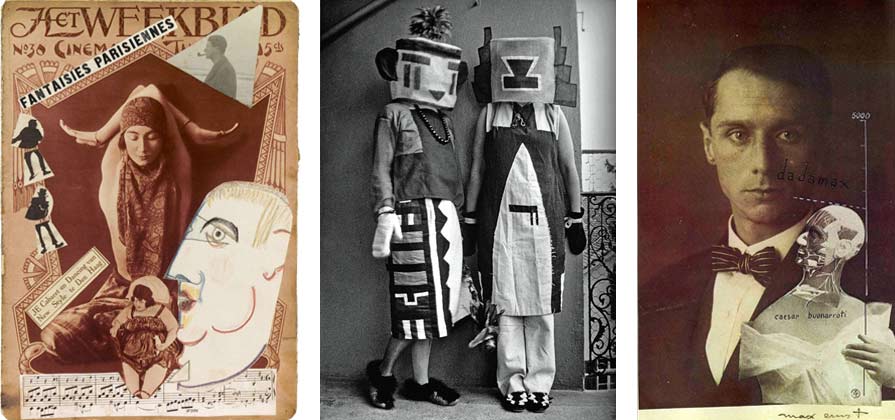
Dadaism had many faces. While in Cologne visual arts was prevailing, Paris, for example, concentrated on literature. At the time when it was born, dadaism was a protest against the absurdity of war, rising chaos and more broadly – outdated social constructs. “We didn’t want to have anything to do with this kind of humans, or rather anti-humans, who on the train of their reason ran through fields of corpses, and eventually through us ourselves.” – would write after years one of the key people of the movement, Hans Richter. “We wanted to create a new kind of man, with whom one would enjoy living, far from the dictatorship of reason, banality, generals, homelands, nations, art dealers, microbes, the past and residence visas”.
And they fully managed to do so. Dadaism became not only a stance against Word War I, the bourgeois society and its institution, but a general “anti-” stance, or even more – an outlook on the world. That is why a dadaist does not have to be linked with the Dada movement that is marked on history timeline.
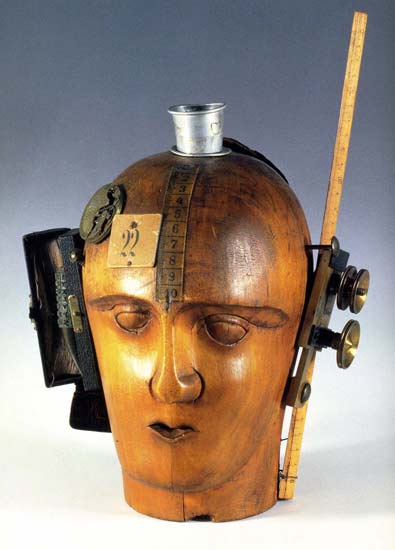
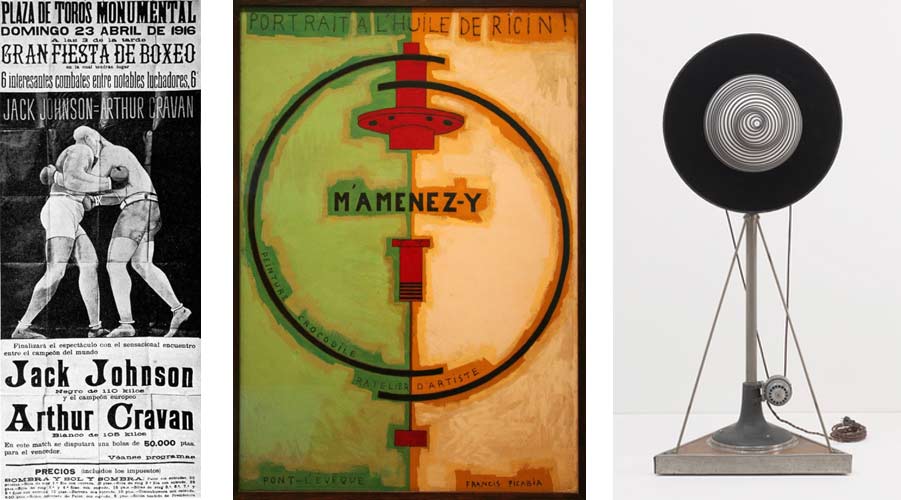

This Dada stance can be seen as disagreement with the reality, discarding schemes, doubting common theories; It is about verifying accepted values. Because a dadaist is a freed man, constantly refreshing his opinions and unrelenting with working on and shaping his own self.
Aiming at spiritual and mental freedom, inner development, a dadaist accepts absurd and chance as the natural way of things, it makes use of intuition and irrationalism, seeks sense in absurd, in short: a dadaist is forever a child, cultivating its inner “dada”.
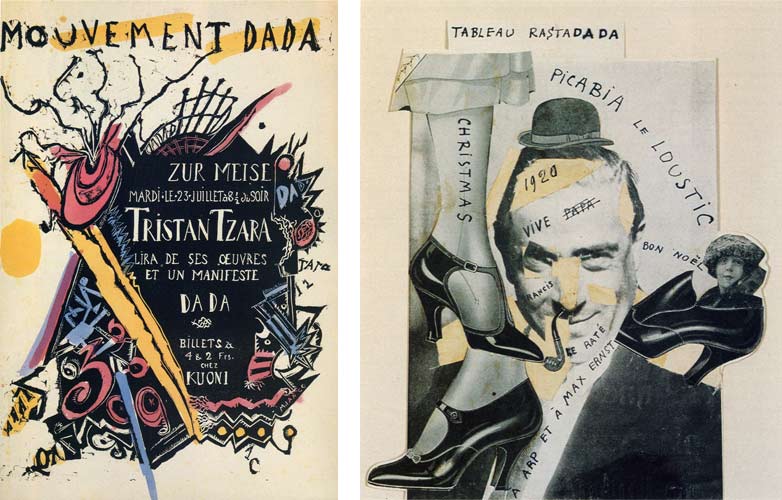
If one were to believe the academic literature, Dadaism ended around 1922 in Paris. But it didn’t die. We still find it in the attitude of many artists, for instance existentialists with their obligatory distance to the world. “I rebel – therefore we exist” wrote Albert Camus. Jean-Paul Sartre also, like the dadaists, prioritized the process more than the result, treating life as a continuous process of self-improvement.
Dada didn’t die. It survived the test of time because scepticism forces artists to search for their own, independent ways without regard for trends, fashions, tendencies. It survived because humorous and lax approach to creating gives a one of a kind chance to create independent, free, sincere art, “far from the dictatorship of reason, banality, generals […]”. And so Dada survived because today too much “stupidity has amassed”.
Today people also feel like victims of the manipulations of politics and mass media, and, just like the dadaists in their own time, ask themselves fundamental questions about values: where to look for authorities and are there even any authorities left in this world full of sick systems.




I see you don’t monetize your blog, don’t waste your traffic, you can earn extra bucks every month because
you’ve got hi quality content. If you want to know how to make extra bucks, search for:
best adsense alternative Wrastain’s tools